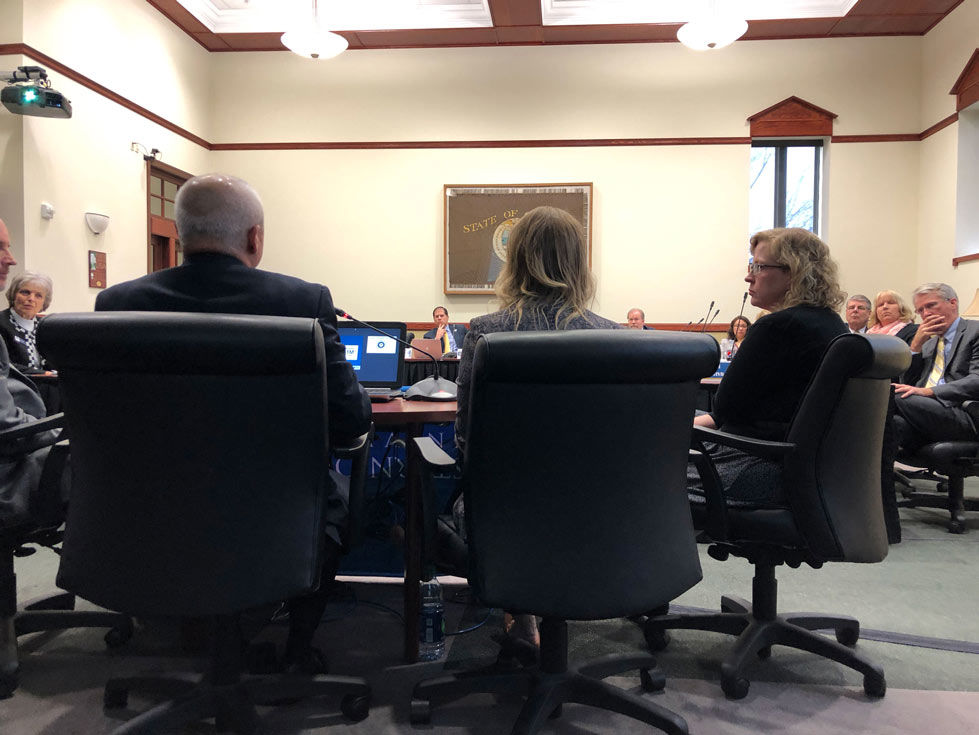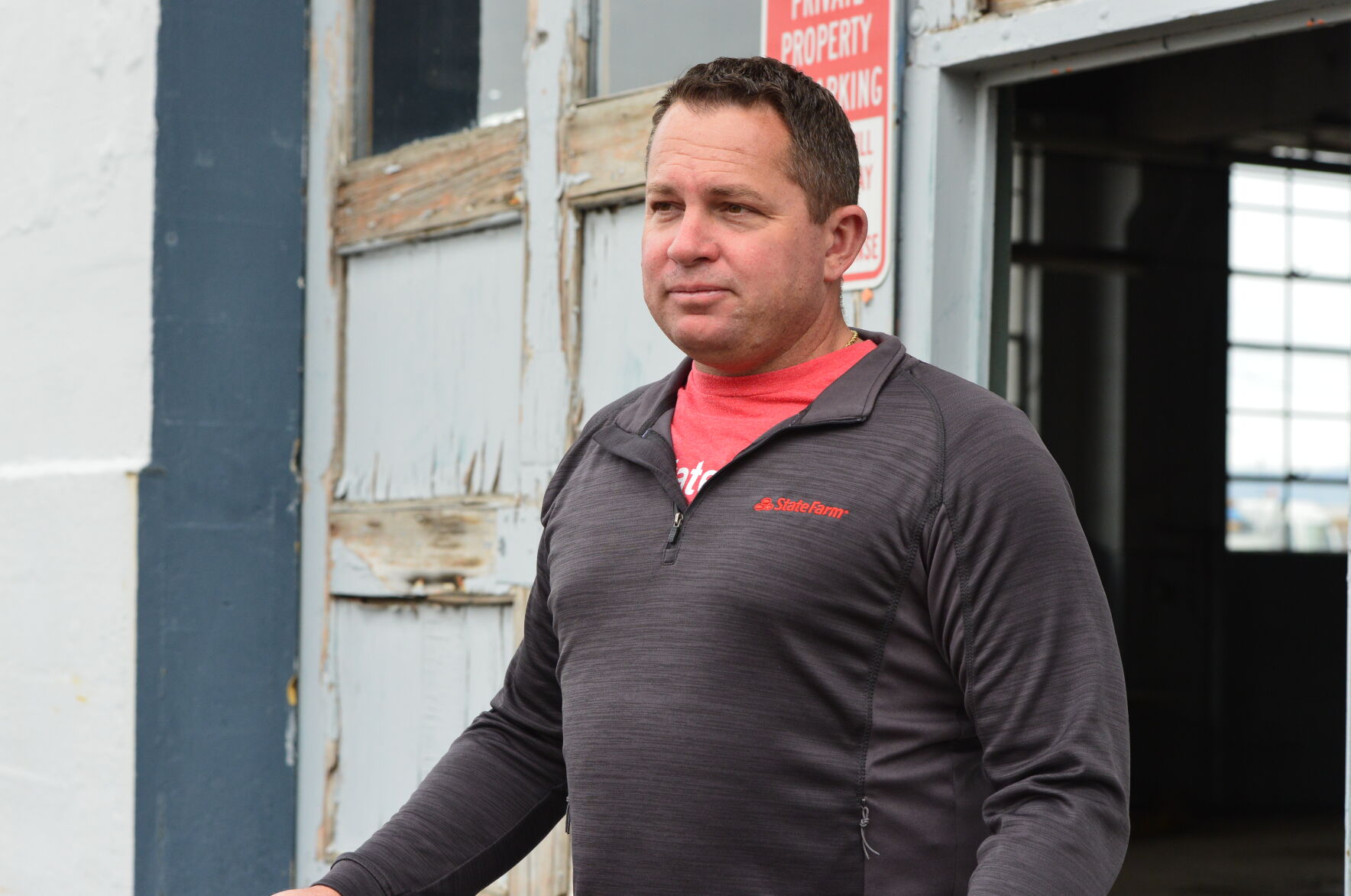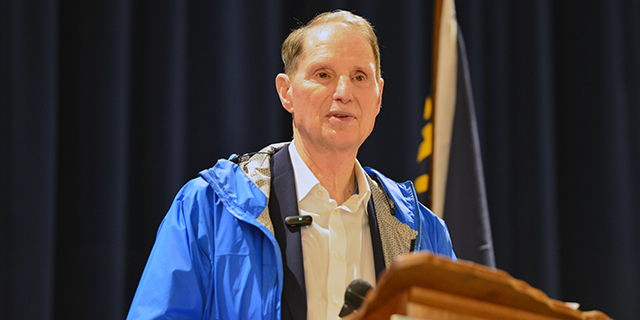EOU board remains quiet on OPM
Published 11:47 am Friday, July 13, 2018

- In February, Pearson, an OPM company presented to the EOU board of trustees.
Eastern Oregon University administration has provided little public information regarding an upcoming decision that has the potential to drastically affect the future of the university and its students. Some members of the Board of Trustees, who will be making the final decision in November, on whether to partner with an online program management company, would not offer a lot of information on what they know about the company or how they individually feel about bringing on an Online Program Management (OPM).
History
In August 2017, Eastern Oregon University requested proposals from online program management companies. OPM’s are third-party for-profit companies that assist universities in developing online curriculum and marketing strategies.
According to Eastern’s executive director of regional outreach and innovation, David Vande Pol, who has previous experience working in online program management, the reason Eastern should partner with an OPM is simple: to increase enrollment.
He told the EOU Board of Trustees in April that there has been a shift in demographics in higher education, with more and more students pursuing degrees online rather than on campus.
“Things are only going to get more competitive in the online space, especially for small universities without brand recognition,” Vande Pol said at the April meeting, explaining why he believes the university should partner with an OPM. EOU saw a 3 percent decline in enrollment last fall.
Three OPM companies submitted proposals to EOU within a few weeks of the request, and two were invited to campus in October 2017 –– The Learning House and Pearson Online Learning Services. Vande Pol was the vice president of business development for the latter agency from 2013 to 2015.
In December 2017, EOU President Tom Insko and Vande Pol decided that EOU should explore a partnership with Pearson, and they presented the idea to the Board of Trustees in February 2018.
In February, Insko told the trustees he wanted to complete the evaluation process with Pearson by May 25 and provide a recommendation to the board at that time.
In the February meeting, the trustees had a few questions regarding Pearson — mostly about what the process would be once integration began — and why Insko had created such a short timeframe to determine if a partnership with Pearson would be beneficial for the university.
“I think we have a sense of urgency to address our enrollment issues,” Insko told the trustees at the February meeting. “The longer we wait, the more risk we (run).”
However, Vice President for University Advancement Tim Seydel told The Observer in June that Insko’s and Vande Pol’s teams had decided to wait until the next school year –– fall 2018 –– to make any moves regarding the partnership, allowing for faculty and staff to be back on campus prior to any changes.
Inkso wrote in an infoline email to faculty –– which was part of a 60-page document a faculty ad hoc committee posted online –– that he does not “take lightly (the) delay in making a determination on a partnership with (Pearson).” However, he pushed the deadline to November 15.
Lack of Information
In June, when The Observer sought the opinions of EOU faculty on partnering with an online management company, the majority of the 13 faculty members contacted said they were not comfortable discussing the issue on the record. The faculty who agreed to answer questions all stated that while Eastern needs help in marketing, they didn’t believe an OPM was the best solution — and may even put the university, as a whole, at risk.
Shortly after the June story was published in The Observer, the president’s office released a campus-wide email, obtained by The Observer, that said, “It is important to note that there were a number of unfortunate inaccuracies in the (Observer) piece as neither the President’s Office nor University Advancement were contacted to provide clarification or context for some of the claims made (by faculty) in the article.”
For clarification of the campus-wide email, The Observer reached out to University Advancement to learn what was inaccurate in the article so corrections could be published.
Seydel responded in an email stating, “Any time confusing information is published or broadcast about EOU in today’s interconnected world, we receive inquiries, questions, comments and concerns. While requesting corrections after the fact is possible, unfortunately the message is already published, and does not address the direct communication that needs to take place with a specific audience.”
The editor of The Observer emailed once more for clarification on what was specifically inaccurate in the article but did not receive a reply.
Because the Board of Trustees will make the final decision on whether to bring on an OPM in November– each with an individual vote– The Observer contacted each member of the board to see how he or she felt about the board’s future decision.
Of the 15 members of the board, 13 refused to comment on the matter.
All board members referred The Observer to Seydel or Board Chair David Nelson.
Nicole Almanza, an EOU student whose term on the board ended this spring, committed to an interview to discuss the OPM. On the day of the interview, she canceled, stating, “I was contacted by the school and they asked me to refer you to Chair Nelson.” She would not say who contacted her.
Helen Moore, said she was “not allowed to answer (questions about the OPM),” but later said she “wasn’t comfortable answering at this point.”
More than one board member said they were “not allowed to talk to the media.”
The Observer left a message on Insko’s private cellphone and later received a call from Seydel who said Insko was unavailable and the board would speak only as a unified voice.
“We follow (rules) that say trustees will speak as one voice,” Nelson told The Observer on Tuesday. “We have disagreements in committees and meetings, but it’s our policy not to air them out in the newspaper.”
Nelson said the trustees give their individual opinions at the board meetings, but are not allowed to speak to the media outside of meetings individually.
He said Eastern has not yet decided on partnering with Pearson and is still in the evaluation process — something that Insko has echoed in letters to faculty, that were published as part of a 60-page document online.
“At EOU we’re in fierce competition for students, staff and faculty with significant political overtones, since half of our money comes from the state of Oregon,” Nelson told The Observer.
He said the goal of the board is to avoid passing on the cost of higher education to the students. Rather than increasing tuition, they must look for another way to produce revenue.
“Our two main sources of revenue come from students (paying tuition) and the state,” said Richard Chaves, who is on the Board of Trustees and also the chair of the Finance and Administration Committee said.
The concern for EOU, according to Nelson, is that in six year Eastern’s reserve funds of $8 million will be gone, if they don’t increase enrollment, since they will be using the reserves so as not to increase tuition for students.
Chavez disagreed with that.
“I’m sure there are scenarios where our reserves could be used up, but I wouldn’t say that in six years our reserves would be gone if we don’t increase enrollment,” he said.
Marketing and online presence
Faculty agree with administration that EOU does need assistance in marketing the university.
“If we lack anything, it’s marketing –– we need to extend our brand,” Brienna Fleming, an English and writing instructor, told The Observer in May. Vande Pol told The Observer in February that Pearson would assist with marketing.
“They bring terrific marketing skills and a budget that, quite frankly, we don’t have,” he said.
While the marketing may be beneficial, faculty have expressed concern about giving an OPM control over the college’s online presence.
“My online students are my students,” DeAnna Timmermann, assistant professor of psychology, told The Observer in May. “Under an OPM model –– at least the model that has been shared with us –– they won’t be. I can see how administration is concerned about enrollment, but I would hate for (an OPM) to be the only avenue they explore.”
According to Nelson, administration has investigated other marketing options.
“We looked at (options) in-house, but thought that would take resources we don’t have,” Nelson told The Observer on Tuesday. “We looked at hiring a marketing firm, but don’t think there (would be) any return (on our investment) there.”
However, Insko told the EOU Faculty Senate in March that he had not looked at other marketing options.
“Are there no revenue-sharing models with marketing firms?” Cori Brewster, a Faculty Senator and English and writing professor, asked in the meeting, according to meeting minutes provided online. “They don’t have their grip in the education but there still is some accountability.”
Insko responded that he wasn’t aware of any in terms of marketing.
“I have not (approached any marketing firms),” Insko said at the March meeting. “I doubt (Seydel) has.”
When asked what the end goal was for the university by partnering with an OPM, Insko told the Faculty Senate the university needs to grow.
“This campus is sized to feel like a small, private school of 2,000-2,500 students,” he said. “From the online side it opens up – keeping us connected to what’s emerging in the education marketplace.”
He was then asked if that was possible without an OPM.
“If it’s not an OPM we will identify something else (to increase enrollment),” Insko said.





